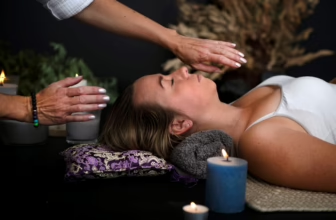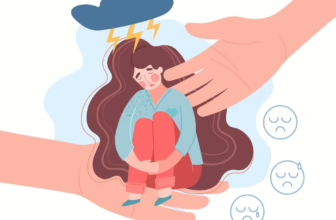When it comes to treating addiction and mental health issues, there’s no one-size-fits-all solution. Every person’s journey is different, shaped by their experiences, biology, emotions, and environment. That’s why many experts now recommend a combination of traditional and holistic approaches to treatment.
By blending science-backed medical care with whole-person healing practices, this integrative model supports not just recovery—but transformation. It honors the physical, emotional, and spiritual sides of healing.
In this article, we’ll explore the benefits of combining traditional and holistic treatments and how this approach leads to deeper, more lasting recovery.
What Are Traditional Treatment Approaches?
Traditional treatments are grounded in research and clinical practice. They focus on stabilizing the individual, treating symptoms, and preventing relapse.
These methods include:
- Detoxification and medical management
- Psychotherapy (like Cognitive Behavioral Therapy or CBT)
- Medication-Assisted Treatment (MAT) for substance use disorders
- Group and individual counseling
- 12-step programs or support groups
According to the National Institute on Drug Abuse (NIDA), combining behavioral therapy with medications provides the best chance of success in treating substance use disorders 1.
Traditional treatment is highly effective, but it doesn’t always address the deeper emotional or spiritual aspects of healing. That’s where holistic care comes in.
What Are Holistic Treatment Approaches?
Holistic approaches focus on treating the whole person—mind, body, and spirit. These therapies support emotional wellness, self-awareness, and lifestyle changes that encourage long-term healing.
Examples of holistic therapies include:
- Yoga and meditation
- Art or music therapy
- Nutrition and wellness coaching
- Breathwork and mindfulness
- Acupuncture or massage
- Spiritual or nature-based healing
Holistic therapies don’t replace traditional care. Instead, they work alongside it to create a more complete recovery experience.
Why Combining Both Works Best
Combining traditional and holistic treatments creates a comprehensive and personalized recovery plan. This integrative approach addresses not only the physical symptoms but also the emotional, psychological, and spiritual roots of addiction or mental illness.
Let’s look at the top benefits of this combined model.
1. Treats the Whole Person
Traditional therapy often focuses on symptoms. Holistic care looks deeper—to the person beneath the symptoms. When both are combined, individuals receive tools to manage their diagnosis and support their well-being in daily life. This includes improving sleep, reducing anxiety, and finding purpose. For example, someone might use medication and therapy to stabilize mood while also practicing yoga to manage stress and improve physical health.
2. Reduces Stress and Improves Emotional Regulation
Stress is one of the top triggers for relapse. Holistic therapies like mindfulness, breathwork, and movement calm the nervous system and teach people how to respond—not react—to stress.
A 2018 review published in Frontiers in Psychology found that mindfulness-based interventions significantly improved emotional regulation and reduced relapse rates in people recovering from substance use 2. When combined with CBT or group therapy, these practices create a powerful emotional toolkit.
3. Enhances Engagement and Motivation
Recovery can feel overwhelming, especially during the early stages. Adding creative or movement-based therapies to traditional treatment can help people stay engaged and motivated. Activities like art, music, or journaling give people a sense of achievement. They offer emotional release and help process experiences in nonverbal ways. When clients feel emotionally supported and creatively empowered, they’re more likely to stick with their recovery plan.
4. Improves Physical Health and Brain Function
Substance use and mental health disorders often lead to poor nutrition, sleep issues, and physical pain. Traditional treatment may address symptoms, but holistic care supports physical healing. Nutritional counseling, exercise, and bodywork (like massage or acupuncture) help restore energy, reduce inflammation, and improve mood. A 2017 study published in Nutrients showed that individuals in recovery who received nutritional support had better focus, emotional balance, and physical health within weeks of treatment (3). This improves brain function and strengthens resilience.
5. Builds Long-Term Coping Skills
Traditional therapy teaches important tools like reframing thoughts and managing cravings. Holistic therapy adds tools for daily self-care.
Practices like meditation, mindful walking, or gratitude journaling help people stay connected to their recovery—especially after formal treatment ends.
When someone can manage anxiety through breathwork or boost mood with movement, they’re less likely to return to harmful behaviors.
6. Encourages Self-Discovery and Personal Growth
Recovery is not just about stopping something—it’s about starting something new. Holistic practices give people the chance to explore who they are beyond addiction or illness.
Spiritual counseling, nature therapy, or expressive arts invite people to reflect on what matters to them—what brings joy, peace, and meaning.
This deeper connection to self supports long-term motivation and inner healing.
Real-Life Story: Healing Through Integration
Samantha, 32, entered a treatment program for alcohol use. She began with detox, medication, and weekly CBT sessions. But she felt emotionally stuck.
Her counselor suggested she join a holistic track that included yoga, art therapy, and nutrition support.
“It changed everything,” Samantha said. “Therapy helped me understand my addiction, but yoga helped me feel safe in my body again. Art let me express things I didn’t know how to say. I wasn’t just surviving—I was healing.”
She’s now been sober for 18 months and continues to practice meditation and painting as part of her routine.
How to Find an Integrative Treatment Program
If you're seeking care for yourself or someone else, look for programs that combine clinical and holistic support. Ask these questions:
- Do you offer both evidence-based therapy and holistic options?
- Is there a licensed therapist on staff as well as wellness practitioners?
- Can clients create a personalized recovery plan?
- What types of aftercare or ongoing support are included?
Many residential and outpatient centers now offer integrated care models that include both approaches.
Getting Started on Your Own
You don’t need to be in a formal program to start blending traditional and holistic healing.
Try this simple routine:
- Start your morning with deep breathing or light yoga.
- Attend a support group or therapy session.
- Journal your thoughts or draw how you feel.
- Eat nourishing meals and drink plenty of water.
- End the day with meditation or gratitude reflection.
Healing isn’t about being perfect—it’s about finding what helps you feel whole.
Final Thoughts: A Path to Complete Healing
Combining traditional and holistic approaches creates a treatment experience that’s compassionate, personalized, and effective. It helps people heal at every level—mentally, physically, emotionally, and spiritually. This integrative approach gives people more than sobriety or symptom relief. It gives them the tools to live a full, meaningful life.
Whether you’re just beginning recovery or looking to deepen it, remember: you deserve care that sees all of you—and supports all of you.
Sources
- National Institute on Drug Abuse. (2023). Principles of Drug Addiction Treatment. [https://nida.nih.gov] ↩
- Garland, E. L., et al. (2018). Mindfulness-based interventions and addiction. Frontiers in Psychology. ↩
- De Timary, P., et al. (2017). Nutrition and recovery outcomes. Nutrients. ↩
Follow me down the rabbit hole!
I'm Alice and I live with a dizzying assortment of invisible disabilities, including ADHD and fibromyalgia. I write to raise awareness and end the stigma surrounding mental and chronic illnesses of all kinds.








